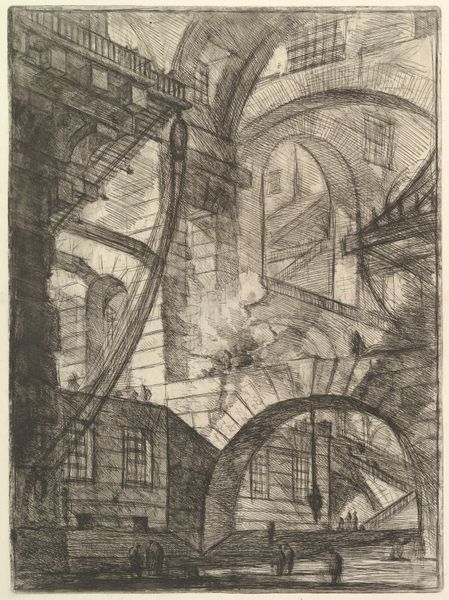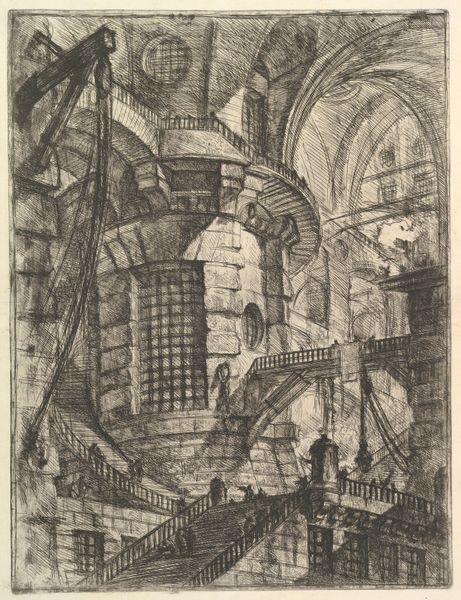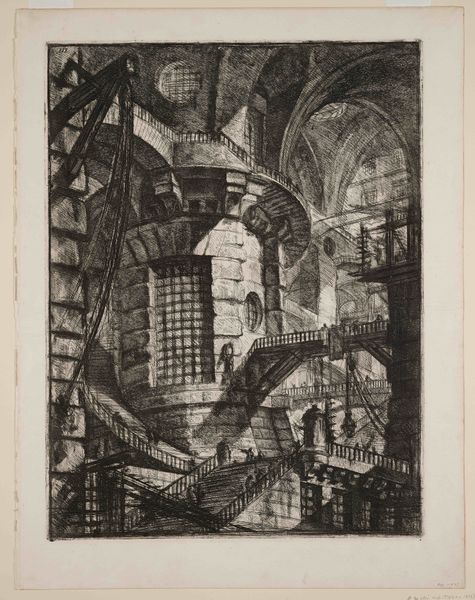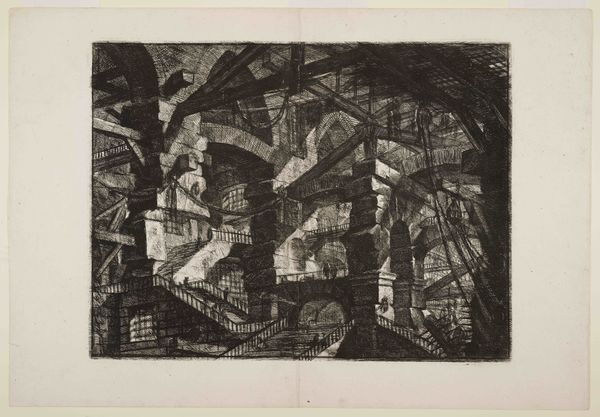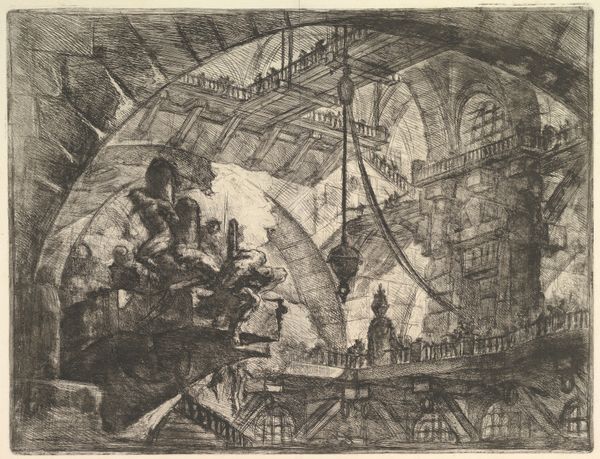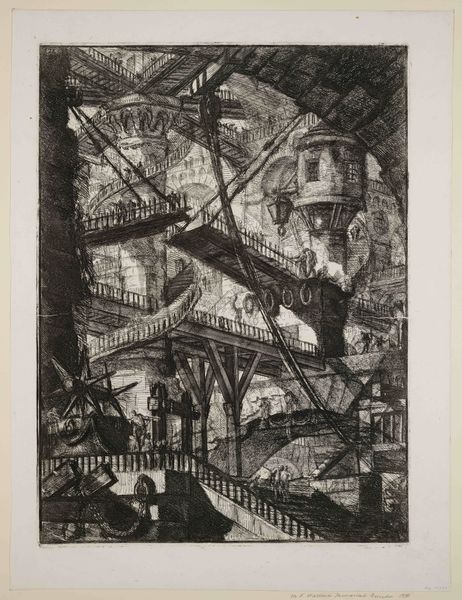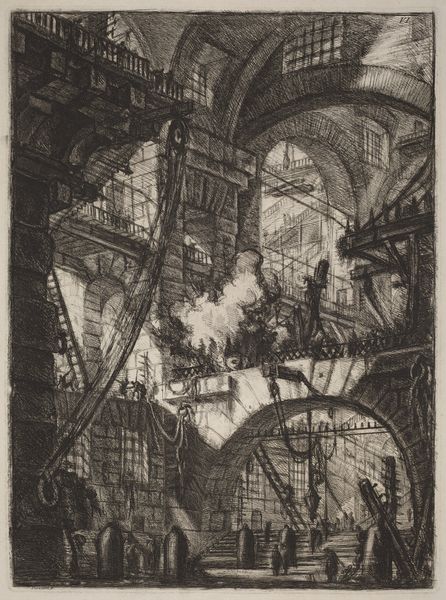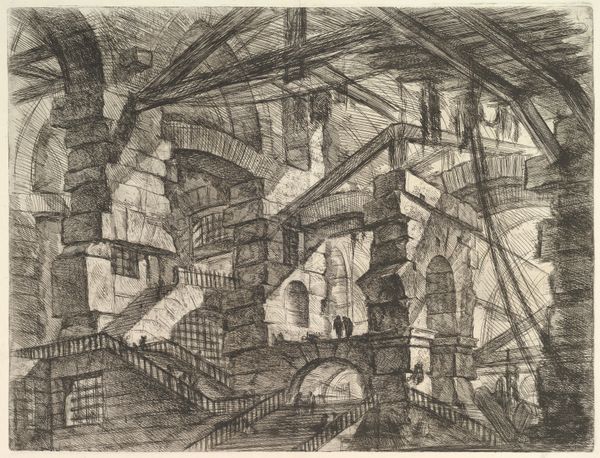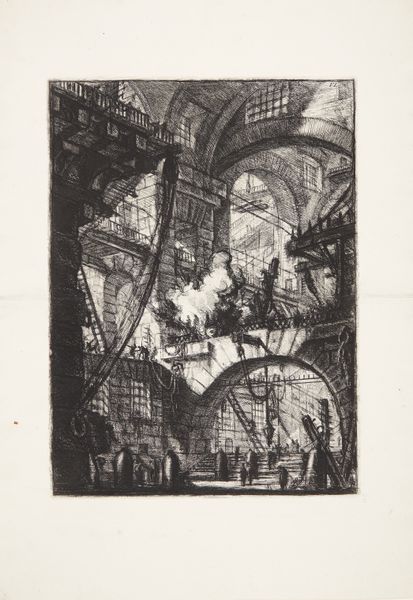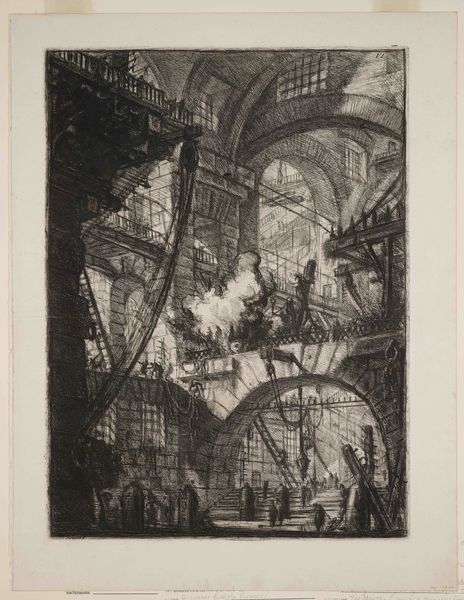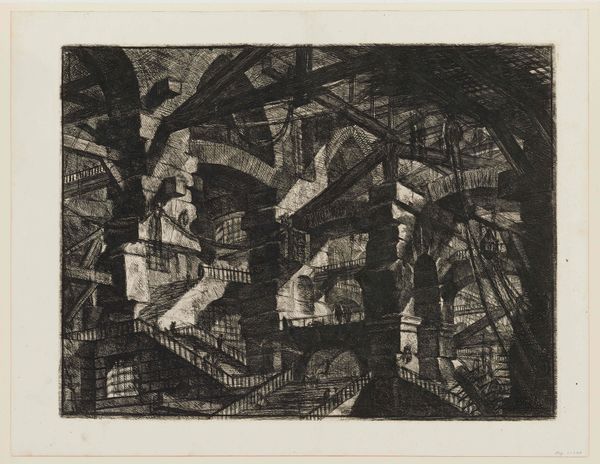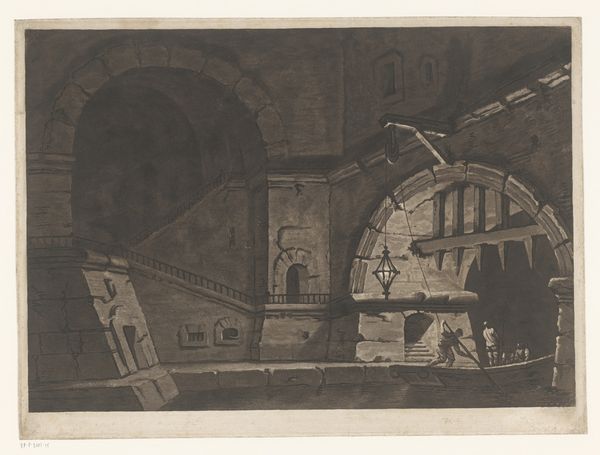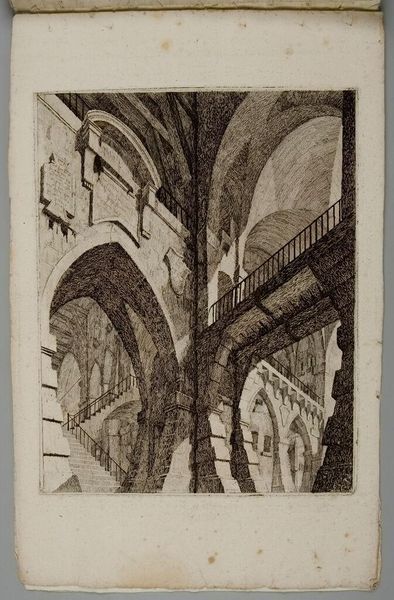
graphic-art, print, etching, architecture
#
graphic-art
#
medieval
#
ink painting
# print
#
etching
#
etching
#
history-painting
#
architecture
Dimensions: 23 5/8 x 17 15/16 in. (60 x 45.5 cm) (sheet)21 1/16 x 15 5/8 in. (53.5 x 39.7 cm) (plate)
Copyright: Public Domain
Editor: Here we have Giovanni Battista Piranesi’s 1749 etching, "The Smoking Fire," currently held at the Minneapolis Institute of Art. It feels quite cavernous, almost infinite. What strikes you when you look at it? Curator: Note how the etching’s lines are not merely representational; they articulate space. Consider the density of line in the shadowed areas. What effect do they achieve in contrast to the lighter areas? Editor: They make it feel oppressive, I suppose. But why that repetition of arches? What purpose do they serve, beyond creating perspective? Curator: They serve as structural elements within the composition and echo each other to give this seemingly impossible structure a sense of form. See how the linear perspective almost collapses in the center? Piranesi plays with spatial ambiguity, creating both depth and surface complexity. Observe the interplay between vertical and horizontal lines; how does that influence your reading of the space? Editor: It is kind of dizzying. I keep wanting to find a clear vanishing point, but it feels like it shifts depending on where I look. The structure looms but never feels fully grounded. Curator: Precisely. Consider also the textures created by the various etching techniques—the delicate lines suggesting light, the dense cross-hatching implying shadow. The materiality of the print itself is essential to experiencing the artwork’s illusory space. Editor: It’s fascinating how he used a relatively simple medium to create such a complex world. Thanks; I definitely look at it differently now, with much more appreciation for the balance of spatial representation and abstraction in this etching. Curator: Indeed. Paying such close attention to formal qualities can often open exciting avenues of understanding.
Comments
minneapolisinstituteofart almost 2 years ago
⋮
In this view of a prison interior, Giovanni Battista Piranesi explored his imagination through architecture realized only on paper, unfettered by practical considerations. The scene revels in the sublime—the flipside of the Age of Enlightenment—in which Romantics opened themselves to the sensation of forces beyond human comprehension and control. Piranesi intended us to lose ourselves as we wander through his maze of stairways, balconies, and catwalks leading to unknown destinations. This is the scary movie of the 18th century. Perspective of Arches belongs to a suite of such prison scenes. A decade after their first appearance in the late 1740s, Piranesi went back to work on his copper plates, darkening the images both literally and figuratively. It is in no small part due to the radical rethinking evident between the two iterations of the Prisons (see Mia P.11,330) that Piranesi is sometimes called “the Rembrandt of Architecture.” Perspective of Arches is among the most freely drawn plates of the first edition and among the most radically transformed in the second.
Join the conversation
Join millions of artists and users on Artera today and experience the ultimate creative platform.
